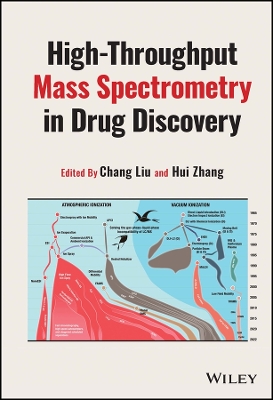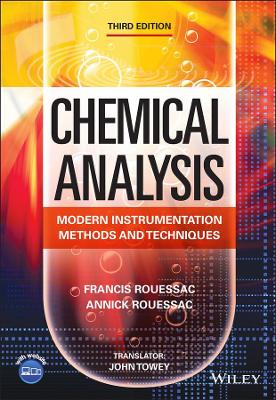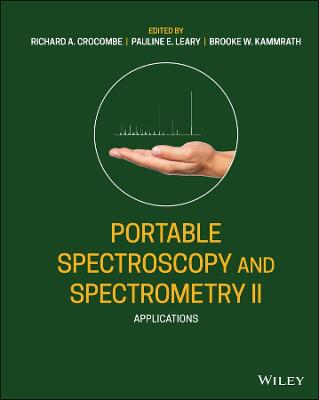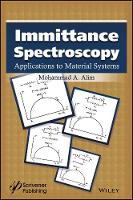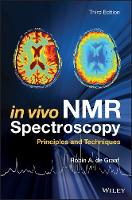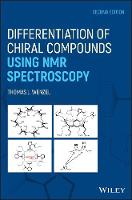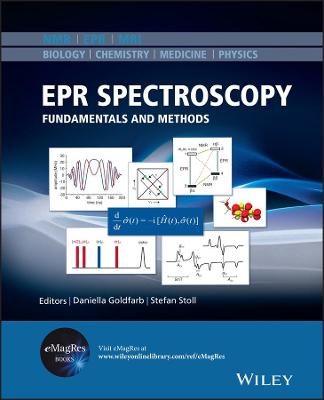Modern Raman Spectroscopy
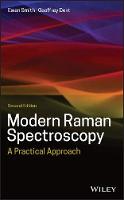 -15%
portes grátis
-15%
portes grátis
Modern Raman Spectroscopy
A Practical Approach
Dent, Geoffrey; Smith, Ewen
John Wiley & Sons Inc
04/2019
256
Dura
Inglês
9781119440550
15 a 20 dias
546
Acknowledgements xi
Chapter 1 Introduction, Basic Theory and Principles 1
1.1 Introduction 1
1.2 History 2
1.3 Basic Theory 2
1.4 Molecular Vibrations 8
1.5 Group Vibrations 11
1.6 Basic Interpretation of a Spectrum 13
1.7 Summary 19
Chapter 2 The Raman Experiment - Raman Instrumentation, Sample Presentation, Data Handling and Practical Aspects of Interpretation 21
2.1 Introduction 21
2.2 Choice of Instrument 22
2.3 Transmission Raman Scattering and Spatially Offset Raman Scattering 29
2.4 Raman Sample Preparation and Handling 30
2.4.1 Sample Mounting - Optical Considerations 31
2.4.2 Raman Sample Handling 34
2.5 Sample Mounting Accessories 40
2.5.1 Small Fibres, Films, Liquids and Powders 40
2.5.2 Variable Temperature and Pressure Cells 40
2.5.3 Special Applications - Thin Films, Surfaces and Catalysts 42
2.5.4 Reaction Cells, Flow Through Cells, Sample Changers and Automated Mounts 44
2.6 Fibre-Optic Coupling and Wave Guides 45
2.7 Microscopy 49
2.7.1 Raman Microscopes 49
2.7.2 Depth Profiling 51
2.7.3 Imaging and Mapping 51
2.8 Calibration 56
2.9 Data Manipulation, Presentation and Quantitation 59
2.9.1 Manipulation of Spectra for Presentation 59
2.9.2 Presentation of Spectra 63
2.9.3 Quantitation 64
2.10 An Approach to Qualitative Interpretation 66
2.10.1 Factors to Consider in the Interpretation of a Raman Spectrum of an Unknown Sample 67
2.10.1.1 Knowledge of the Sample and Sample Preparation Effects 68
2.10.1.2 Instrument and Software Effects 69
2.10.1.3 The Spectrum 69
2.10.2 Computer-Aided Spectrum Interpretation 70
2.10.3 Spectra Formats for Transfer and Exchange of Data 73
2.11 Summary 74
Chapter 3 The Theory of Raman Spectroscopy 77
3.1 Introduction 77
3.2 Absorption and Scattering 78
3.3 States of a System and Hooke's Law 79
3.4 The Basic Selection Rule 82
3.5 Number and Symmetry of Vibrations 83
3.6 The Mutual Exclusion Rule 84
3.7 Understanding Polarizability 85
3.8 Polarizability and the Measurement of Polarization 89
3.9 Symmetry Elements and Point Groups 93
3.10 Lattice Modes 97
3.11 Summary 98
Chapter 4 Resonance Raman Scattering 101
4.1 Introduction 101
4.2 The Basic Process 102
4.3 Key Differences Between Resonance and Normal Raman Scattering 102
4.3.1 Intensity Increase 103
4.3.2 Franck Condon and Herzberg Teller Scattering 105
4.3.3 Overtones 108
4.3.4 Wavelength Dependence 109
4.3.5 Electronic Information 111
4.4 Practical Aspects 113
4.5 Summary 116
Chapter 5 Surface Enhanced Raman Scattering and Surface Enhanced Resonance Raman Scattering 119
5.1 Introduction 119
5.2 Electromagnetic and Charge Transfer Enhancement 123
5.2.1 Electromagnetic Enhancement 124
5.2.2 Charge Transfer or Chemical Enhancement 128
5.2.3 Stages in the SERS Process 133
5.3 Surface Enhanced Resonance Raman Scattering (SERRS) 134
5.4 Selection Rules 135
5.5 Surface Chemistry 137
5.6 Substrates 139
5.7 Quantitation and Multiplex Detection 145
5.8 Summary 147
Chapter 6 Applications 151
6.1 Introduction 151
6.2 Inorganics and Minerals and Environmental Analysis 151
6.3 Art and Archaeology 156
6.4 Polymers and Emulsions 158
6.4.1 Overview 158
6.4.2 Simple Qualitative Polymer Studies 158
6.4.3 Quantitative Polymer Studies 162
6.5 Dyes and Pigments 163
6.5.1 Raman Colour Probes 163
6.5.2 In Situ Analysis 164
6.5.3 Raman Studies of Tautomerism in Azo Dyes 167
6.5.4 Polymorphism in Dyes 168
6.6 Electronics Applications 169
6.7 Biological and Clinical Applications 174
6.7.1 Introduction 174
6.8 Pharmaceuticals 176
6.9 Forensic Applications 180
6.10 Process Analysis and Reaction Following 183
6.10.1 Introduction 183
6.10.2 Electronics and Semiconductors 183
6.10.3 PCl3 Production Monitoring 184
6.10.4 Anatase and Rutile Forms of Titanium Dioxide 184
6.10.5 Polymers and Emulsions 185
6.10.6 Pharmaceutical Industry 186
6.10.7 Solid-Phase Organic Synthesis/Combinatorial Chemistry 186
6.10.8 Fermentations 188
6.10.9 Gases 188
6.10.10 Catalysts 188
6.10.11 Nuclear Industry 191
6.11 Summary 191
Chapter 7 More Advanced Raman Scattering Techniques 199
7.1 Introduction 199
7.2 Flexible Optics 200
7.3 Spatial Resolution 204
7.4 Pulsed and Tunable Lasers 207
7.5 Tip-Enhanced Raman Scattering and SNOM 214
7.6 Single-Molecule Detection 216
7.7 Time-Resolved Scattering 218
7.8 Fluorescence Rejection 222
7.9 Raman Optical Activity 222
7.10 UV Excitation 223
7.11 Summary 227
Appendix A Table of Inorganic Band Positions 229
Index 233
Acknowledgements xi
Chapter 1 Introduction, Basic Theory and Principles 1
1.1 Introduction 1
1.2 History 2
1.3 Basic Theory 2
1.4 Molecular Vibrations 8
1.5 Group Vibrations 11
1.6 Basic Interpretation of a Spectrum 13
1.7 Summary 19
Chapter 2 The Raman Experiment - Raman Instrumentation, Sample Presentation, Data Handling and Practical Aspects of Interpretation 21
2.1 Introduction 21
2.2 Choice of Instrument 22
2.3 Transmission Raman Scattering and Spatially Offset Raman Scattering 29
2.4 Raman Sample Preparation and Handling 30
2.4.1 Sample Mounting - Optical Considerations 31
2.4.2 Raman Sample Handling 34
2.5 Sample Mounting Accessories 40
2.5.1 Small Fibres, Films, Liquids and Powders 40
2.5.2 Variable Temperature and Pressure Cells 40
2.5.3 Special Applications - Thin Films, Surfaces and Catalysts 42
2.5.4 Reaction Cells, Flow Through Cells, Sample Changers and Automated Mounts 44
2.6 Fibre-Optic Coupling and Wave Guides 45
2.7 Microscopy 49
2.7.1 Raman Microscopes 49
2.7.2 Depth Profiling 51
2.7.3 Imaging and Mapping 51
2.8 Calibration 56
2.9 Data Manipulation, Presentation and Quantitation 59
2.9.1 Manipulation of Spectra for Presentation 59
2.9.2 Presentation of Spectra 63
2.9.3 Quantitation 64
2.10 An Approach to Qualitative Interpretation 66
2.10.1 Factors to Consider in the Interpretation of a Raman Spectrum of an Unknown Sample 67
2.10.1.1 Knowledge of the Sample and Sample Preparation Effects 68
2.10.1.2 Instrument and Software Effects 69
2.10.1.3 The Spectrum 69
2.10.2 Computer-Aided Spectrum Interpretation 70
2.10.3 Spectra Formats for Transfer and Exchange of Data 73
2.11 Summary 74
Chapter 3 The Theory of Raman Spectroscopy 77
3.1 Introduction 77
3.2 Absorption and Scattering 78
3.3 States of a System and Hooke's Law 79
3.4 The Basic Selection Rule 82
3.5 Number and Symmetry of Vibrations 83
3.6 The Mutual Exclusion Rule 84
3.7 Understanding Polarizability 85
3.8 Polarizability and the Measurement of Polarization 89
3.9 Symmetry Elements and Point Groups 93
3.10 Lattice Modes 97
3.11 Summary 98
Chapter 4 Resonance Raman Scattering 101
4.1 Introduction 101
4.2 The Basic Process 102
4.3 Key Differences Between Resonance and Normal Raman Scattering 102
4.3.1 Intensity Increase 103
4.3.2 Franck Condon and Herzberg Teller Scattering 105
4.3.3 Overtones 108
4.3.4 Wavelength Dependence 109
4.3.5 Electronic Information 111
4.4 Practical Aspects 113
4.5 Summary 116
Chapter 5 Surface Enhanced Raman Scattering and Surface Enhanced Resonance Raman Scattering 119
5.1 Introduction 119
5.2 Electromagnetic and Charge Transfer Enhancement 123
5.2.1 Electromagnetic Enhancement 124
5.2.2 Charge Transfer or Chemical Enhancement 128
5.2.3 Stages in the SERS Process 133
5.3 Surface Enhanced Resonance Raman Scattering (SERRS) 134
5.4 Selection Rules 135
5.5 Surface Chemistry 137
5.6 Substrates 139
5.7 Quantitation and Multiplex Detection 145
5.8 Summary 147
Chapter 6 Applications 151
6.1 Introduction 151
6.2 Inorganics and Minerals and Environmental Analysis 151
6.3 Art and Archaeology 156
6.4 Polymers and Emulsions 158
6.4.1 Overview 158
6.4.2 Simple Qualitative Polymer Studies 158
6.4.3 Quantitative Polymer Studies 162
6.5 Dyes and Pigments 163
6.5.1 Raman Colour Probes 163
6.5.2 In Situ Analysis 164
6.5.3 Raman Studies of Tautomerism in Azo Dyes 167
6.5.4 Polymorphism in Dyes 168
6.6 Electronics Applications 169
6.7 Biological and Clinical Applications 174
6.7.1 Introduction 174
6.8 Pharmaceuticals 176
6.9 Forensic Applications 180
6.10 Process Analysis and Reaction Following 183
6.10.1 Introduction 183
6.10.2 Electronics and Semiconductors 183
6.10.3 PCl3 Production Monitoring 184
6.10.4 Anatase and Rutile Forms of Titanium Dioxide 184
6.10.5 Polymers and Emulsions 185
6.10.6 Pharmaceutical Industry 186
6.10.7 Solid-Phase Organic Synthesis/Combinatorial Chemistry 186
6.10.8 Fermentations 188
6.10.9 Gases 188
6.10.10 Catalysts 188
6.10.11 Nuclear Industry 191
6.11 Summary 191
Chapter 7 More Advanced Raman Scattering Techniques 199
7.1 Introduction 199
7.2 Flexible Optics 200
7.3 Spatial Resolution 204
7.4 Pulsed and Tunable Lasers 207
7.5 Tip-Enhanced Raman Scattering and SNOM 214
7.6 Single-Molecule Detection 216
7.7 Time-Resolved Scattering 218
7.8 Fluorescence Rejection 222
7.9 Raman Optical Activity 222
7.10 UV Excitation 223
7.11 Summary 227
Appendix A Table of Inorganic Band Positions 229
Index 233



